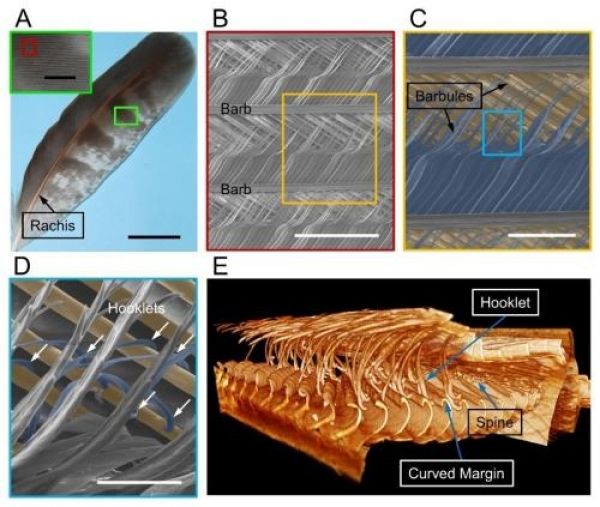Chinese researchers have discovered and characterized a sophisticated mechanism in bird feathers that enhances tear resistance, overturning a centuries-old explanation of how bird feathers work.
The newly discovered cascaded slide-lock system is composed of flexible hooklets, a slide rail, and spines at the end of the slide rail as terminating structures.
This finding demonstrates that the superdurability of bird feathers against tears derives from their cascaded slide-lock system, not from the “hook–groove system” proposed centuries ago.
Results were published in PNAS in an article entitled "Repairable cascaded slide-lock system endows bird feathers with tear-resistance and superdurability."
Read more at Chinese Academy of Sciences Headquarters
Image: (A) The vane consists of a number of side branches, which are aligned in parallel and are called barbs. (B) The adjacent barbs overlap closely, forming the dense vane. The second-order side branches, called barbules, occur on both sides of barbs. (C and D) The hooklets from one barb hook the adjacent barbs and fasten the vane. (E ) Stereoscopic structure of a feather obtained via 3D reconstruction with a micro X-ray microscope. The hooklets hook the curved margin of the barbules on the adjacent barbs. Finer toothlike spine structures can be observed. (Scale bars: A, 3 cm, and Inset, 5 mm; B, 500 μm; C, 200 μm; D, 50 μm.) (Credit: TIPC)


